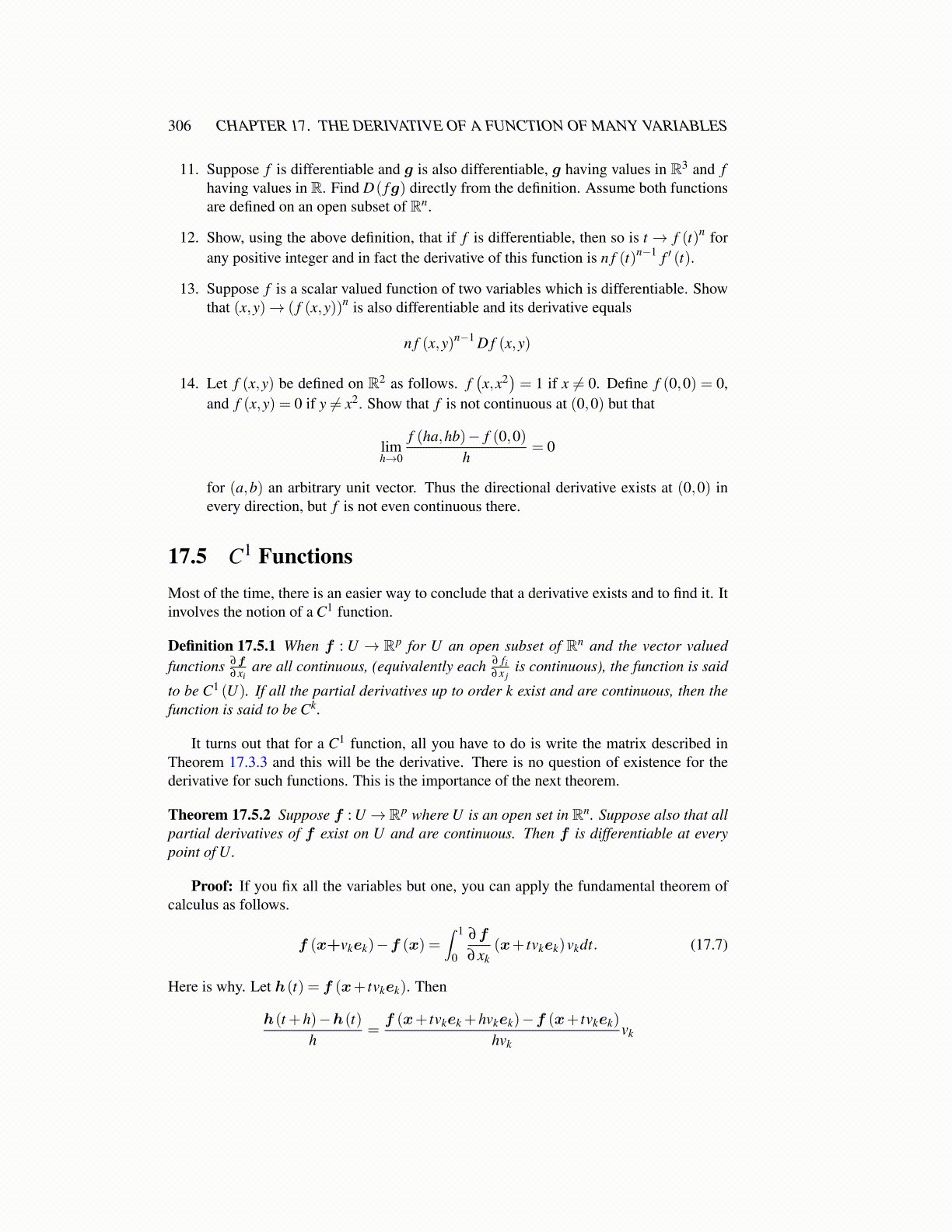
306 CHAPTER 17. THE DERIVATIVE OF A FUNCTION OF MANY VARIABLES
11. Suppose f is differentiable and g is also differentiable, g having values in R3 and fhaving values in R. Find D( fg) directly from the definition. Assume both functionsare defined on an open subset of Rn.
12. Show, using the above definition, that if f is differentiable, then so is t → f (t)n forany positive integer and in fact the derivative of this function is n f (t)n−1 f ′ (t).
13. Suppose f is a scalar valued function of two variables which is differentiable. Showthat (x,y)→ ( f (x,y))n is also differentiable and its derivative equals
n f (x,y)n−1 D f (x,y)
14. Let f (x,y) be defined on R2 as follows. f(x,x2
)= 1 if x ̸= 0. Define f (0,0) = 0,
and f (x,y) = 0 if y ̸= x2. Show that f is not continuous at (0,0) but that
limh→0
f (ha,hb)− f (0,0)h
= 0
for (a,b) an arbitrary unit vector. Thus the directional derivative exists at (0,0) inevery direction, but f is not even continuous there.
17.5 C1 FunctionsMost of the time, there is an easier way to conclude that a derivative exists and to find it. Itinvolves the notion of a C1 function.
Definition 17.5.1 When f : U → Rp for U an open subset of Rn and the vector valuedfunctions ∂f
∂xiare all continuous, (equivalently each ∂ fi
∂x jis continuous), the function is said
to be C1 (U). If all the partial derivatives up to order k exist and are continuous, then thefunction is said to be Ck.
It turns out that for a C1 function, all you have to do is write the matrix described inTheorem 17.3.3 and this will be the derivative. There is no question of existence for thederivative for such functions. This is the importance of the next theorem.
Theorem 17.5.2 Suppose f : U →Rp where U is an open set in Rn. Suppose also that allpartial derivatives of f exist on U and are continuous. Then f is differentiable at everypoint of U.
Proof: If you fix all the variables but one, you can apply the fundamental theorem ofcalculus as follows.
f (x+vkek)−f (x) =∫ 1
0
∂f
∂xk(x+ tvkek)vkdt. (17.7)
Here is why. Let h(t) = f (x+ tvkek). Then
h(t +h)−h(t)h
=f (x+ tvkek +hvkek)−f (x+ tvkek)
hvkvk